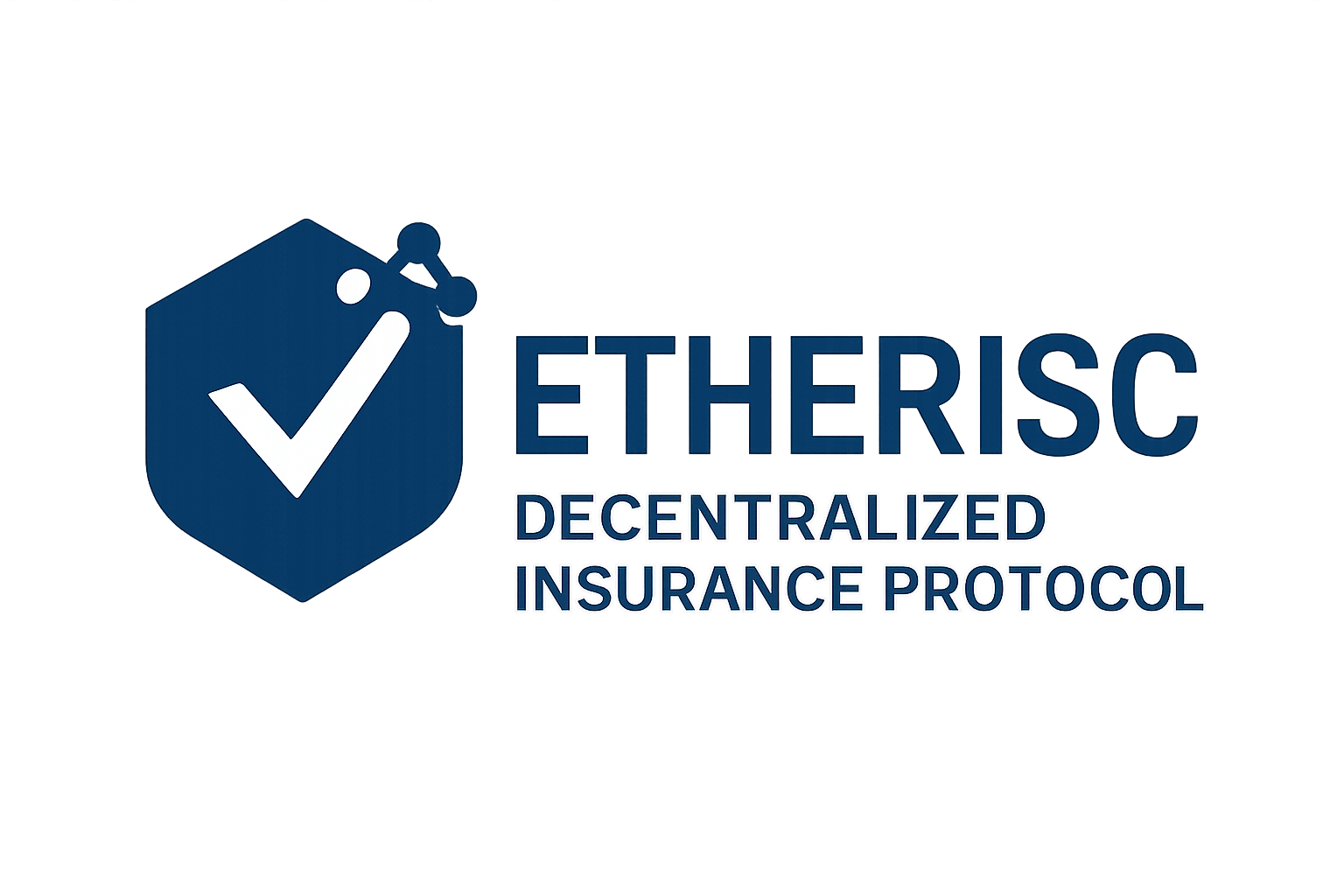
On-chain reinsurance is having a breakout year in 2024. As traditional reinsurers face rising premiums, tighter capacity, and stricter underwriting, blockchain protocols are moving in to offer transparency, efficiency, and access to new capital. The result? A wave of innovative platforms that are reshaping how risk is transferred and managed, both for crypto-native players and established insurers looking for an edge.

Why 2024 Is the Year for On-Chain Reinsurance Protocols
The past year has been a stress test for legacy reinsurance: surging claims costs, reduced market capacity, and a renewed focus on operational resilience. This perfect storm has accelerated adoption of on-chain reinsurance protocols, which use smart contracts and tokenized collateral to bring new efficiencies to risk pooling and payout processes. The protocols leading the charge are not just theoretical, they’re already supporting billions in real-world insurance exposure.
Let’s break down the top five blockchain reinsurance platforms making headlines in 2024, their unique features, and why insurers are taking notice.
Top 5 On-Chain Reinsurance Protocols in 2024
-

Re Protocol is a decentralized reinsurance infrastructure that connects global capital markets to blockchain, enhancing transparency and speed. Since its 2022 launch, Re has backed over $34 million in premiums and insured tens of thousands of small businesses. In 2025, it expanded on Avalanche with on-chain yield products like reUSD and reUSDe, and launched a points program for users.
-

OnRe (formerly Nayms) is a regulated on-chain reinsurance company operating on Solana. It launched its ONe token in May 2025, offering investors exposure to reinsurance performance and collateral yield, with projected returns up to 40.35% for liquidity providers. OnRe bridges the $750B reinsurance market with DeFi via scalable, yield-bearing products.
-

Etherisc is a leading open-source protocol for decentralized insurance applications. It enables the creation of transparent, automated insurance products, including crop, flight delay, and hurricane insurance. Etherisc’s modular framework allows for the development of custom reinsurance solutions, supporting both traditional and blockchain-native insurers.
-

InsurAce is a multi-chain insurance protocol that offers coverage for smart contract risks, stablecoins, and DeFi protocols. With over $340 million in coverage provided since launch, InsurAce supports reinsurance by pooling risk and capital across chains, enhancing security and capital efficiency for decentralized insurers.
-

Provenance Blockchain is a purpose-built blockchain for financial services, including insurance and reinsurance. In 2024, Provenance enabled Infineo to migrate $621.7 million in life insurance policies on-chain, demonstrating large-scale adoption of blockchain-based reinsurance infrastructure.
1. Re Protocol: Connecting Global Capital with Real-World Risk
Re Protocol is rapidly becoming the backbone for decentralized reinsurance infrastructure. In August 2025 it expanded its suite on Avalanche with two new yield products, reUSD (Basis-Plus) and reUSDe (Insurance Alpha): targeting both institutional investors and DeFi power users. What sets Re apart is its ability to connect global capital markets directly to insurance risk via tokenized pools. Since launching in late 2022, it’s backed $34 million in premiums and insured tens of thousands of small businesses across diverse sectors.
The protocol’s integration with partners like Ethena signals growing institutional appetite for blockchain-based risk transfer solutions. Its transparent approach to premium flows and claims data is setting a new standard for trust in digital insurance markets.
2. OnRe: Real-World Yield Meets DeFi Liquidity
OnRe, formerly Nayms, is laser-focused on bridging the $750 billion global reinsurance market with DeFi capital. Its regulated platform allows users to deposit sUSDe stablecoins into diversified reinsurance pools, earning exposure to both premium income and collateral yield. When OnRe launched its native ONe token in May 2025, it offered liquidity providers projected returns up to 40.35%. That’s not just hype; integrations like ONyc on Kamino deliver base yields over 14% (split between premium flows and stablecoin strategies), making real-world insurance returns accessible to crypto investors at scale.
This protocol isn’t just about high yields, it’s about composability too. By operating on Solana’s high-speed blockchain infrastructure, OnRe enables instant settlement of claims and seamless integration with other DeFi primitives.
3. Etherisc: Pioneering Parametric Insurance on Chain
Etherisc has carved out a niche as the go-to protocol for parametric insurance, think flight delay coverage or crop failure protection powered by oracles feeding real-world data directly into smart contracts. Etherisc partners with both traditional carriers and crypto-native underwriters to offer automated payouts when predefined conditions are met, eliminating disputes over claims assessment.
This approach isn’t limited to small-scale pilots; Etherisc-backed products have covered everything from hurricane risk in the Caribbean to micro-insurance for farmers across Africa, demonstrating that blockchain can deliver impact at both local and global scales.
4. InsurAce: Multi-Chain Insurance Marketplace for DeFi and Beyond
InsurAce is a multi-chain insurance protocol that’s become a staple for DeFi users seeking protection against smart contract exploits, exchange hacks, and stablecoin depegs. What makes InsurAce stand out in 2024 is its expansion into the reinsurance layer, offering coverage not just to individuals but also acting as a backstop for other decentralized insurers. By pooling risk across chains like Ethereum, BNB Chain, and Polygon, InsurAce enables broader diversification and capital efficiency.
Its flexible underwriting pools and actuarial models allow both retail and institutional participants to underwrite risk or purchase cover, all with transparent claims processes governed by community voting. As more protocols seek reinsurance capacity in a volatile market, InsurAce’s on-chain pools are becoming a go-to solution for managing systemic risk within crypto ecosystems.
5. Provenance Blockchain: Tokenizing Life Insurance and Institutional Risk
Provenance Blockchain is making waves by bringing traditional life insurance policies on-chain, a move that’s already seen $621.7 million in tokenized life insurance assets minted by partners like Infineo (source). This isn’t just about digitizing paperwork; it’s about unlocking liquidity for insurers and policyholders alike. By representing policies as real-world assets (RWAs) on Provenance, the protocol enables instant settlement, secondary trading, and composability with other DeFi products.
The impact? Faster claims processing, reduced administrative overhead, and new ways for institutional investors to access insurance-linked returns, all while maintaining regulatory compliance through smart contract enforcement of KYC/AML requirements.
How These Protocols Are Changing the Game
The top on-chain reinsurance protocols are doing more than just digitizing legacy processes, they’re fundamentally changing how risk is shared across the global financial system:
- Transparency: Public ledgers provide real-time insight into premium flows, reserves, and claims history.
- Capital Efficiency: Tokenized collateral can be deployed instantly across multiple risk pools or platforms.
- Global Access: Both crypto investors and traditional reinsurers can participate in yield opportunities previously locked behind closed doors.
- Automation: Smart contracts reduce manual reconciliation and speed up payouts, critical when every hour counts after a loss event.
What’s Next? Institutional Adoption and New Use Cases
The momentum behind blockchain reinsurance platforms isn’t slowing down as we head into 2025. With major protocols like Re forging partnerships with TradFi players (see the Ethena collaboration), OnRe delivering double-digit yields through integrations on Kamino, and Provenance onboarding billions in tokenized RWAs, there’s little doubt these systems are here to stay.
The next frontier? Expect to see even more sophisticated use cases emerge, think catastrophe bonds issued directly on-chain or AI-powered underwriting models feeding live data into parametric contracts. And as regulators sharpen their focus on transparency and solvency in digital insurance markets, these protocols’ built-in audit trails will only become more valuable.
The bottom line: The winners in this space will be those who blend regulatory rigor with blockchain agility, delivering yield for investors while making insurance safer and more accessible worldwide. If you’re an active trader or institutional allocator looking at the future of risk transfer, these five platforms should be at the top of your watchlist.






